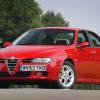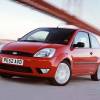
RAC sale – up to 33% off*
• Roadside cover from £5.29 a month†
• We get to most breakdowns in 60 mins or less
• Our patrols fix 4/5 breakdowns on the spot

BY JONATHAN CROUCH
Introduction
To put it mildly, Ford's Scorpio was one of the more unusual executive offerings of recent years. Its styling couldn't have been more different from the conservative looks of the car it replaced, the dear old Granada. Certainly, it took both buyers and competitors in the boardroom sector by surprise.
Whether this 'blend for the Nineties' was successful depends on who you speak to. Ford executives always maintained that production was sold out for months ahead, but were always unwilling to specify what the production level actually was. Below what Ford of Europe would have liked it to be, certainly.
But that market uncertainty is good news for today's second-hand buyer. Regardless of what you think of the looks, the Scorpio drives brilliantly and prices are tempting.
Models
Models Covered: (2.0 8v Saloon, Estate [Executive, Ghia] / 2.0 16v Saloon, Estate [Executive, Ghia, Ultima] / 2.3 16v Saloon, Estate [Ghia, Ghia X, Ultima] / Granada 2.9 6cy 12v Saloon, Estate [Executive, Ghia, Ultima] / Granada 2.9 6cy 24v Saloon, Estate [Executive, Ghia, Ultima] / 2.5 TD Saloon, Estate [Executive, Ghia, Ghia X, Ultima])
History
The Scorpio was introduced in October 1994, replacing the much-loved Granada as Ford's executive flagship. Its unusual looks caused an instant furore not helped by the fact that no one at Ford admitted overall responsibility for creating them.
Don't be confused, by the way, by the new look Scorpio and the Scorpio level of specification available for top-line versions of the previous Granada.
Early models were offered with a choice of four main petrol powerplants - a 2.0-litre 'four' - offered in either 8v or 16v forms - and both 12v and 24v versions of the 2.9-litre V6. There was also a 2.5-litre turbo diesel. Executive, Ghia and Ultima trim levels were all offered.
In August 1996, the handling was improved and the range rationalised. Trim levels were now known as Ghia, Ghia X and Ultima but more significantly, a new 2.3-litre 16v engine (developed, like the 24v V6, by Cosworth) added to the range.
Ford fiercely defended those unusual looks all through the car's life but bowed to public pressure in early 1998 by reducing the amount of chrome around the bodywork. You'll notice these rare cars by their body-coloured front grille surrounds, darkened headlights and the saloon's restyled tail lights. The Scorpio was gradually phased out during the second half of 1998.
What You Get
A rather dowdy image, but a lot of car. Basically, it drives better than it looks. Scorpios always cruised well on the motorway and with the chassis improvements introduced in 1996, they also handled the twisty stuff pretty well too.
The estate version is huge - but doesn't have the option of a third row of seats. Equipment levels are high and maintenance is cheap.
What You Pay
Please fill in the form here for an exact up-to-date information.
What to Look For
Avoid lack-lustre 2.0-litre and 12v V6 models and spurn the Executive trim level (look around and you'll always find a plusher Ghia for not much more). Be careful if you're buying a turbo diesel to make sure that it isn't a high mileage ex-taxi. Check for signs of 'clocking'. Avoid manual four-cylinder models - they'll be difficult to sell on.
Look out for clattery 2.0-litres and smoky V6s. The estate models are so large that many tradesmen use them instead of vans. Steer clear of high mileage examples; the odometer might lie but sagging driver's seats and shiny steering wheel rims won't.
Watch out for sticking throttle assemblies due to the Scorpio's wide front grille collecting too much road muck. Finally, ensure that all the electrical gadgets work - they'll be pricey to put right.
Replacement Parts
(approx based on 1995 2.0 8V excl VAT) As you might expect, parts are plentiful and relatively inexpensive. Front brakepads are around £30, a full exhaust about £620 (inc Catalyst). A headlamp ranges from about £145-240 and a windscreen is around £319.
On the Road
On the road, the big Ford handles pretty well for a car of its size - though potholes can be a little unsettling for it. The steering, though a little light at first, builds in 'feel' as your speed rises enabling the car to be hustled along with surprising pace if the need arises.
The 24v V6 is really quick but the pick of the range is the 2.3-litre 'four', introduced in 1996. This was the most refined Ford four-cylinder engine ever made, silent when cruising but with a rather exciting growl under heavy acceleration. Pulling power and ultimate speed are excellent, with rest to sixty occupying 9.2s on the way to 130mph.
You may be pleasantly surprised at the excellence of the interior, supremely comfortable and ergonomically satisfactory. In places, the quality of plastics isn't of the best, but there's lots of wood to compensate which, allied with the leather upholstery, gives the cabin a wonderfully opulent atmosphere.
Under its distinctive suit of clothes, the Scorpio is still a Granada at heart, which means that there's still acres of space for rear seat passengers. The seat cushions don't adjust like the plushest rivals, but then, they're so well angled, hugging around you like your favourite armchair, that you don't really need them too.
Overall
In the final analysis, Ford's flagship is certainly good enough to win over buyers on its own merits. If you doubt that, try a Scorpio against, say a Rover 800, and you'll realise that the men of the blue oval produce the better product.
Even against more illustrious competition, the car still has a significant amount to offer, especially if all you really need is comfort, refinement and pace. And that styling? Well, it's a matter of personal opinion of course. For what it's worth, you have to admire Ford for having the courage to produce such a radical design.
If nothing else, it should enable you to discover whether conservatism still reigns in suburbia's driveways.







